
The United States Asiatic Fleet was a fleet of the United States Navy during much of the first half of the 20th century. Before World War II, the fleet patrolled the Philippine Islands. Much of the fleet was destroyed by the Japanese by February 1942, after which it was dissolved, and the remnants incorporated into the naval component of the South West Pacific Area command, which eventually became the Seventh Fleet.

USS Wake (PR-3) was a United States Navy river gunboat operating on the Yangtze River. Originally commissioned as the gunboat Guam (PG-43), she was redesignated river patrol vessel PR-3 in 1928, and renamed Wake 23 January 1941. She was captured by Japan on 8 December 1941 and renamed Tatara. After her recapture in 1945, she was transferred to Chinese nationalists, who renamed her Tai Yuan. Communist forces captured her in 1949. On 1 May 1949 Tai Yuan was sunk by Nationalist aircraft in the Caishiji River.
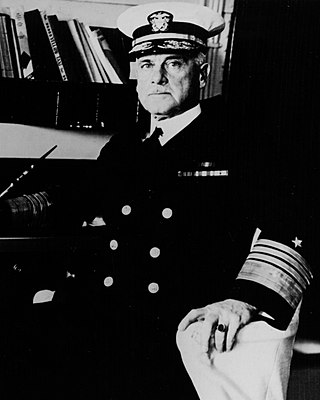
Charles Butler McVay Jr. was an admiral in the United States Navy after World War I. In 1907–1909, after the round-the-world cruise of the Great White Fleet, he commanded the tender USS Yankton. He then held various assignments of increasing importance throughout and after World War I. In the early 1930s, he served as commander-in-chief of the Asiatic Fleet.

The Yangtze Patrol, also known as the Yangtze River Patrol Force, Yangtze River Patrol, YangPat, and ComYangPat, was a prolonged naval operation from 1854 to 1949 to protect American interests in the Yangtze River's treaty ports. The Yangtze Patrol also patrolled the coastal waters of China where they protected U.S. citizens, their property, and Christian missionaries.
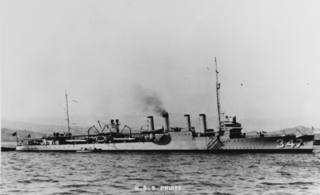
USS Pruitt (DD-347/DM-22/AG-101) was a United States Navy Clemson-class destroyer in commission from 1920 to 1945. She saw service during World War II. She was named for United States Marine Corps Corporal John H. Pruitt, a World War I Medal of Honor recipient who was killed in action Western Front on 4 October 1918 during the Battle of Blanc Mont Ridge.

The 4th Marine Regiment is an infantry regiment of the United States Marine Corps. Based at Camp Schwab in Okinawa, Japan, it is part of the 3rd Marine Division of the III Marine Expeditionary Force.

Marine Light Attack Helicopter Squadron 369 (HMLA-369) is a United States Marine Corps helicopter squadron consisting of AH-1Z Viper attack helicopters and UH-1Y Venom utility helicopters. The squadron, also known as the "Gunfighters", is based at Marine Corps Air Station Camp Pendleton, California and falls under the command of Marine Aircraft Group 39 (MAG-39) and the 3rd Marine Aircraft Wing.
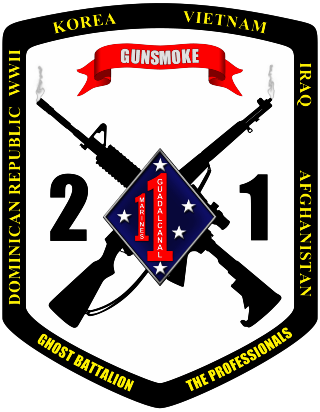
2nd Battalion, 1st Marines (2/1) is an infantry battalion in the United States Marine Corps based in Camp HORNO on Marine Corps Base Camp Pendleton, California. Nicknamed "The Professionals," the battalion consists of approximately 1,200 Marines and Sailors. Normally they fall under the command of the 1st Marine Regiment and the 1st Marine Division.

2nd Battalion, 11th Marines (2/11) is an artillery battalion comprising four firing batteries and a Headquarters Battery. The battalion is stationed at Marine Corps Base Camp Pendleton, California. Its primary weapon system is the M777 lightweight howitzer. The battalion was the first in the Marine Corps to fully transition from the M198 Howitzer. They fall under the command of the 11th Marine Regiment and the 1st Marine Division.

The 1st Battalion 9th Marines (1/9) was an infantry battalion of the United States Marine Corps. Formed during World War I, it served until the mid-2000s when it was deactivated to make room for one of three light armor reconnaissance battalions. During the Vietnam War, 1/9 sustained an especially high casualty rate, such that it received the nickname "The Walking Dead".
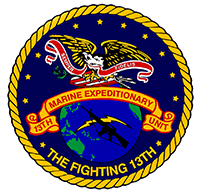
The 13th Marine Expeditionary Unit is one of seven Marine Expeditionary Units currently in existence in the United States Marine Corps. The Marine Expeditionary Unit is a Marine Air Ground Task Force with a strength of about 2,200 personnel. The MEU consists of a command element, a reinforced infantry battalion, a composite aviation squadron and a combat logistics battalion. The 13th MEU is currently based out of Marine Corps Base Camp Pendleton, California.

The 31st Marine Expeditionary Unit is one of seven Marine Expeditionary Units in existence in the United States Marine Corps. The Marine Expeditionary Unit is a Marine Air Ground Task Force with a strength of about 2,200 Marines and sailors. The 31st MEU consists of a company-sized command element, a battalion landing team (BLT),, a medium tiltrotor squadron (reinforced),, and a combat logistics battalion. The 31st MEU is based at Camp Hansen, Marine Corps Base Camp Smedley D. Butler, Okinawa, Japan. The 31st MEU is the only permanently forward-deployed MEU, and provides a flexible and lethal force ready to perform a wide range of military, humanitarian, and diplomatic operations as the premier crisis response force in the Indo-Pacific region.
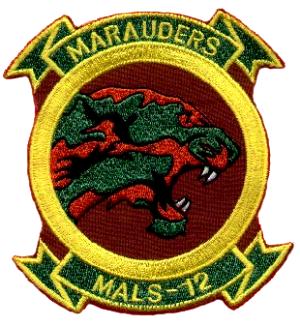
Marine Aviation Logistics Squadron 12 (MALS-12) is an aviation logistics support unit of the United States Marine Corps. Known as the "Marauders", they fall under the command of Marine Aircraft Group 12 (MAG-12) and the 1st Marine Aircraft Wing and are currently based at Marine Corps Air Station Iwakuni.

The Peking Legation Quarter was the area in Beijing (Peking), China where a number of foreign legations were located between 1861 and 1959. In the Chinese language, the area is known as Dong Jiaomin Xiang, which is the name of the hutong through the area. It is located in the Dongcheng District, immediately to the east of Tiananmen Square.
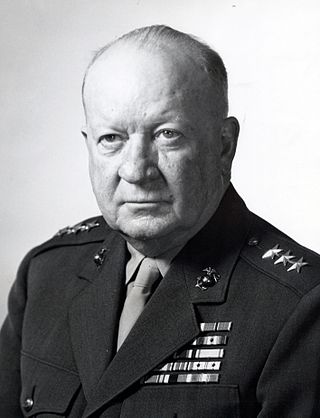
General Ray Albert Robinson was a United States Marine Corps general who served in the Corps more than 40 years. His long and colorful career included service in France during the First World War, action at Guam and Iwo Jima in World War II, sea duty, and China service between World Wars. He also served in 1929 as officer in charge of the Marine detachment which built President Herbert Hoover's Rapidan Camp mountain retreat near Criglersville, Virginia. Robinson twice earned the Legion of Merit with Combat "V" during World War II — the first for outstanding service in July and August 1944, as chief of staff of the 3d Marine Division during the planning and execution of the recapture of Guam; and the second for outstanding service from October 1944 to March 1945, as chief of staff of the 5th Marine Division during the preparation and combat phases of the Iwo Jima campaign.
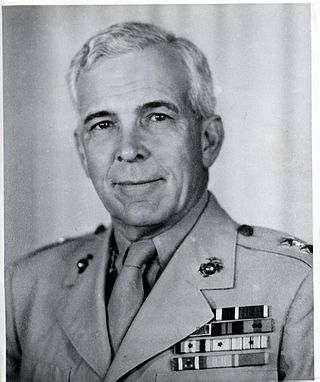
Samuel Lutz Howard was a United States Marine Corps general who served with distinction in the Marine Corps for thirty-eight years. In the early stages of World War II, General Howard commanded the 4th Marine Regiment on Bataan and Corregidor from December 7, 1941, to May 6, 1942. For distinguished service in that bitter encounter, he was awarded the Navy Cross. Captured by the Japanese at Corregidor, he was forced to march many miles to a prison camp where he was held as a prisoner of war from 1942 until being liberated in 1945. He was the most senior U.S. Marine to be held captive during World War II. After the war, he continued to serve until 1953, including posts as commanding general of the 1st Marine Division, Commanding General of Marine Corps Recruit depot Parris Island S.C. from Feb. 2nd 1946 to Feb. 12 1946, and his final post as Inspector General of the Marine Corps.

Louis Bentham Robertshaw was an American football player and lieutenant general in the United States Marine Corps. He flew combat missions in World War II and the Korean War and flew an F4B Phantom II fighter in the Vietnam War as commanding general of the 1st Marine Aircraft Wing. He received three Distinguished Flying Crosses, 12 Air Medals, the Navy Distinguished Service Medal, and three Legion of Merit with Combat "V."

Operation Beleaguer was the codename for the United States Marine Corps' occupation of northeastern China's Hebei and Shandong provinces from 1945 until 1949. The Marines were tasked with overseeing the repatriation of more than 600,000 Japanese and Koreans that remained in China at the end of World War II. During the four-year occupation, American forces engaged in several skirmishes with the People's Liberation Army while successfully evacuating thousands of foreign nationals. The United States Government attempted to mediate a peace treaty between the opposing Nationalist and Communist factions but was unsuccessful. The Marines departed Northern China in June 1949 a few months before the communists won victory in the Chinese Civil War and took control of mainland China.

William Wallace Ashurst was a brigadier general in the United States Marine Corps, who was a last commander of the North China Marine Detachment. He was captured by Japanese forces on December 8, 1941, and was held in captivity for the rest of the war.
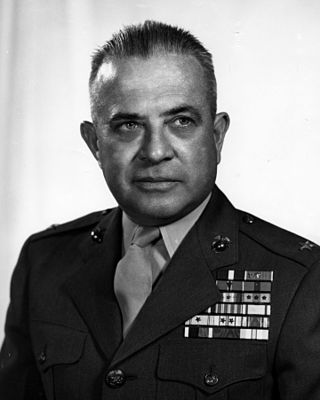
Major General Gregon Albert Williams was a highly decorated officer of the United States Marine Corps who served in World War II and the Korean War. He commanded the 6th Marine Regiment during the Battle of Okinawa and later served as the chief of staff of 1st Marine Division.





















